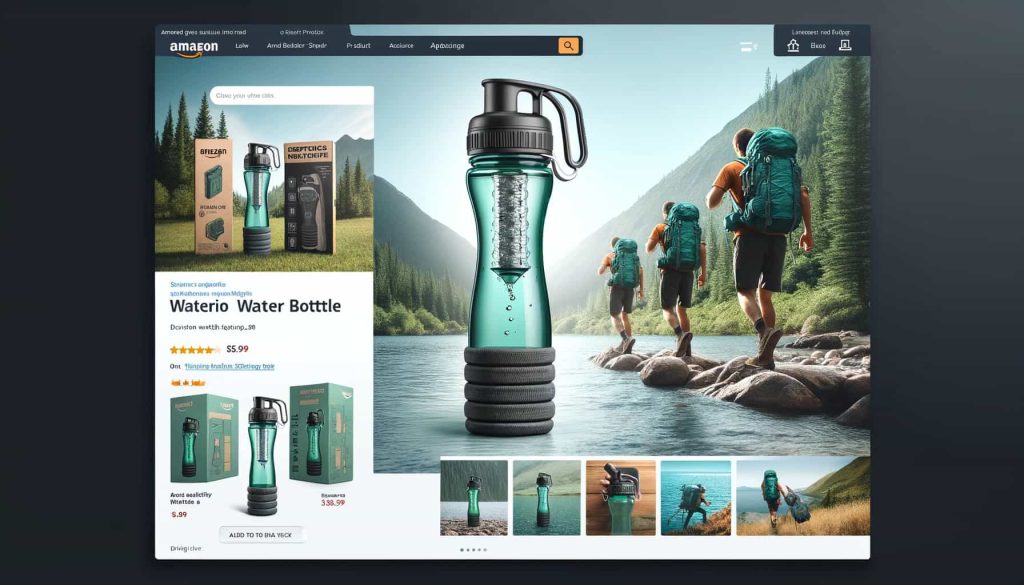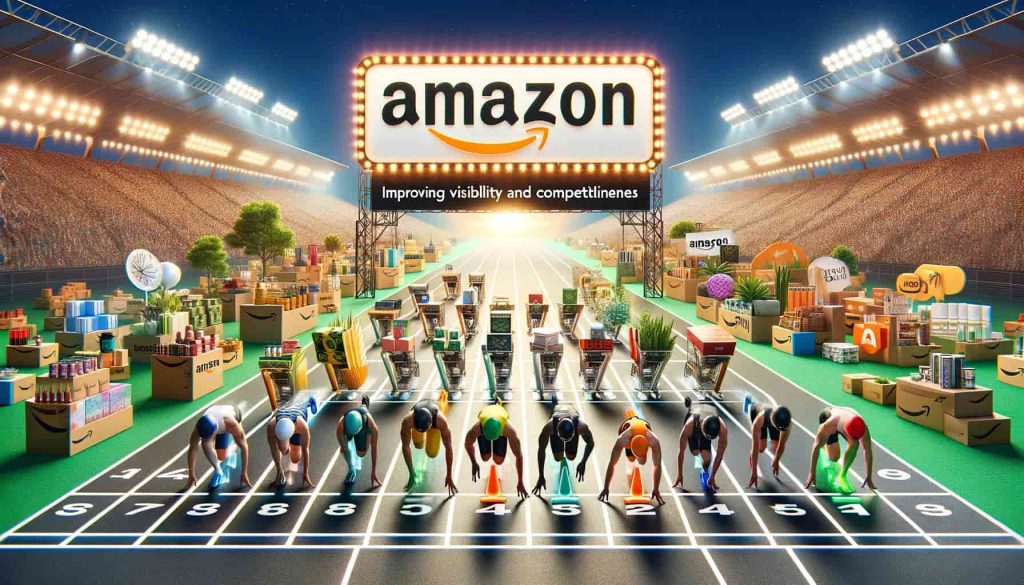If you’re an Amazon seller, you’re probably familiar with the Amazon A9 algorithm. This algorithm is responsible for powering the Amazon search engine and determining which products to rank within the search results. The Amazon A9 algorithm works similarly to other search engines, displaying results based on keyword search, plus a few other factors.
Understanding the Amazon A9 algorithm is crucial for any seller looking to improve their product rankings and sales on the platform. In this guide, we’ll take a closer look at the Amazon A9 algorithm, how it works, and what you can do to improve your rankings and drive more sales through Amazon SEO.
What is Amazon’s A9 Algorithm?
The A9 algorithm is responsible for ranking product results on Amazon, and it shares some similarities to traditional search engine algorithms like Google’s. However, there are a number of differences that make Amazon’s algorithm unique. For instance, the A9 algorithm is trained to prioritize a product listing with good sales and conversion history over keyword-stuffed product listings. It has a cumulative effect, which means that the more sales a product has, the higher it will rank in the search results.

Remember that Amazon’s purpose is to sell items. The system will emphasize high-performing ASINs over ones loaded with keywords. Your items must convert well once a consumer searches or Amazon may drop you down the rankings.
Differences Between A9 and A10 Algorithms
Amazon’s A9 and A10 algorithms are like recipes for deciding which products to show shoppers. A9 used to focus a lot on keywords—so if you used the right words, your items popped up higher in search results.
A10, the newer recipe, still cares about keywords, but it also looks at other things. It values how well you sell and what customers do after they click on your product. It’s like A10 wants to see that your products are not just popular but that people really like them and aren’t just visiting the page and leaving. This changes the game for sellers working to get their products noticed.
How Amazon A9 Algorithm Works?
The Amazon A9 Algorithm is the brain behind Amazon’s search engine. It decides what products show up when you search. A9 looks at a bunch of things like how close your product matches search words, how good your product page looks, if people are buying it, and what buyers are saying about it. Based on all this, it picks the products that you see first when you’re shopping.
Remember, ranking factors of Amazon A9 are keyword relevance, product listing optimization, conversion rate impact, customer feedback, and reviews to determine which products to display to the customers.
Keyword Relevance
Keyword relevance is one of the most critical factors that affect the ranking of products on Amazon. The A9 algorithm analyzes the relevance of keywords used in the product title, description, and other product-related information to determine whether the product is relevant to the customer’s search query. Therefore, it is essential to optimize your product listings with relevant keywords that match the customer’s search queries.
Product Listing Optimization
Product listing optimization involves optimizing various elements of your product listing, such as product title, description, images, and other product-related information, to improve its visibility and ranking on Amazon. The A9 algorithm considers various factors such as product price, availability, and fulfillment method, among others, to determine the ranking of the product.
Conversion Rate Impact
Conversion rate is the percentage of customers who purchase a product after viewing it. The A9 algorithm considers the conversion rate of a product to determine its ranking on Amazon. Therefore, it is essential to optimize your product listings to improve their conversion rates. You can do this by improving your product images, descriptions, and customer reviews, among other factors.
Customer Feedback and Reviews

Customer feedback and reviews are essential factors that affect the ranking of products on Amazon. The A9 algorithm considers the number of customer reviews, ratings, and feedback to determine the ranking of the product. Therefore, it is essential to encourage your customers to leave feedback and reviews on your product listings.
In conclusion, understanding how the Amazon A9 algorithm works is critical to improving your product’s visibility and ranking on Amazon. By optimizing your product listings with relevant keywords, improving product listing optimization, improving conversion rates, and encouraging customer feedback and reviews, you can improve your product’s ranking on Amazon and increase your sales.
Amazon listing optimization is crucial for any seller who wants to succeed on the platform. By optimizing your product listings, you can improve your visibility and increase your chances of making a sale. Here are some effective ways to optimize your Amazon listings:
How to Optimize Your Amazon Product Listings
To optimize your product listing, you should get your Amazon SEO right, this can lead to more sales and better keyword rankings.
These components include:
- Bullet points
- Product description
- Images and videos
- Backend keywords
- Utilizing a+ content and enhanced brand content
Effective Use of Titles and Bullet Points
Your product title and bullet points are the first things that potential customers will see when they come across your listing. Make sure that your title is concise, descriptive, and includes relevant keywords. Your bullet points should highlight the key features and benefits of your product in a clear and easy-to-read format.
Enhancing Product Descriptions
Your product description should provide more detailed information about your product and its features. Use clear and concise language, and make sure to highlight the unique selling points of your product. You can also use formatting such as bold and italic to make important information stand out.
Leveraging High-Quality Images and Videos

High-quality images and videos are essential for showcasing your product and attracting potential customers. Make sure that your product images are clear, well-lit, and show your product from multiple angles. You can also include videos that demonstrate how your product works or showcase its features.
Backend Keywords and Search Terms
Backend keywords and search terms are the keywords that you include in the backend of your listing. These keywords are not visible to customers, but they are used by Amazon’s search algorithm to determine where your listing appears in search results. Make sure to include relevant keywords that accurately describe your product.
Utilizing A+ Content and Enhanced Brand Content
A+ Content and Enhanced Brand Content are additional sections that you can add to your listing to provide more detailed information about your product. These sections allow you to include additional images, videos, and text to showcase your product and its features. Make sure to take advantage of these sections to provide as much information as possible to potential customers.
If you follow these tips, your Amazon listings will shine and you’ll up your odds of selling. Just keep it real with clear, true details about what you’re selling, and make your listing pop with great formatting and pictures.
What is Considered a Good Rank on Amazon?
Having a great sales rank on Amazon really depends on what category your product falls into. But generally, being ranked between 1 and 3 is awesome, and anywhere in the top 50 is great because it means you’ll likely show up on the first page of Amazon Best Sellers.
Here’s a bit more to keep in mind:
- Best Sellers Rank (BSR): Aiming for a BSR between 1-10,000 is solid. The goal is to be in the top 0.5%, 1%, or 3% of sellers in your category.
- In-demand products: Products with a sales rank of less than 2,000 are likely to be in demand.
- Books: For books, a sales rank under 1,000,000 is decent, but being in the top 5,000 is super impressive (though tough to achieve).
Want to climb the ranks? Try these tips:
- Gather customer reviews.
- Use the right keywords to help people find your product.
- Post high-quality pictures to show off what you’re selling.
- Make use of the parent-child feature on Amazon.
- Set a competitive price.
- Answer customer questions to help improve your product’s visibility.
Keeping things simple and focusing on these areas can really help your product stand out on Amazon.
Improving Visibility and Competitiveness

If you want to succeed on Amazon, you need to improve your visibility and competitiveness. Here are some tips to help you do just that.
Understanding the Competition
One of the first things you need to do is understand your competition. You can do this by analyzing their listings and looking at their pricing strategies. Look for ways to differentiate yourself from your competitors. This could be through better product descriptions, better images, or more competitive pricing.
Category and Subcategory Relevance
Another way to improve your visibility is to make sure your products are listed in the right categories and subcategories. This will help ensure that your products are being seen by the right people. It’s also important to make sure your product titles and descriptions are relevant to the category and subcategory they are listed in.
Pricing Strategies
Pricing is another important factor when it comes to improving your visibility and competitiveness on Amazon. You need to find the right balance between price and desirability. If your products are priced too high, they may not be as popular as your competitors’ products. On the other hand, if your products are priced too low, you may not be making enough profit to sustain your business.
Consider using dynamic pricing strategies to stay competitive. This involves adjusting your prices based on factors such as demand, competition, and seasonality. You can also use Amazon’s pricing tools to help you stay competitive.
The Future of Amazon Search and SEO
The future of Amazon search and SEO is poised to evolve beyond the current A9 algorithm, which already meticulously sifts through keywords, price, availability, and customer behavior. As machine learning and artificial intelligence become more sophisticated, these technologies will likely refine how Amazon understands and ranks listings, making search results even more intuitive and tailored to individual shoppers. Sellers will need to stay agile, continuously adapting their strategies to align with Amazon’s deepening understanding of consumer preferences and staying ahead in a marketplace that’s getting smarter by the day.
Conclusion
Understanding the Amazon A9 Algorithm is essential for any seller looking to improve their product’s ranking on Amazon. The A9 Algorithm is a powerful machine learning system that helps drive many of Amazon’s services, including search results and product recommendations.
To optimize your product listing and improve your ranking, you should focus on optimizing your title, bullet points, and product description with relevant keywords. Additionally, you should consider using high-quality images and videos and optimizing your pricing and shipping options.
Keep in mind that the A9 Algorithm is constantly evolving, and Amazon frequently updates its algorithm to improve search results and customer experience. Therefore, it’s essential to stay up-to-date with the latest changes and adapt your strategy accordingly.
Tune into the Seller Sessions Podcast for an in-depth discussion on Amazon’s A9 algorithm:
- Ranking on Amazon – A9 Masterclass Part 1
- Ranking on Amazon. A9 Masterclass part 2 – The Challenge With Ranking Models.
- Ranking On Amazon – A9 Masterclass Part 3
- Ranking on Amazon A9 Part 4- The A10 Myth
Frequently Asked Questions
What is Amazon A9 strategy?
Amazon A9 strategy is the algorithm that powers the Amazon search engine. It is designed to provide the most relevant and helpful results to customers based on their search queries. The A9 algorithm takes into account various factors such as product relevance, customer reviews, sales history, and product pricing to determine the ranking of products in search results.
Why is Amazon called A9?
Amazon is called A9 because it is the name of the subsidiary company that developed the search engine algorithm for Amazon. The A9 algorithm was created in 2003, and it has been continuously updated and improved since then to provide better search results for Amazon customers.
How does Amazon PPC algorithm work?
Amazon PPC algorithm is a paid advertising platform that allows sellers to promote their products on Amazon. It works by using a bidding system, where sellers bid on specific keywords related to their products. When a customer searches for a product using those keywords, the seller’s ad may appear in the search results. The seller only pays when a customer clicks on the ad.
What is SEO on Amazon?
SEO on Amazon refers to the process of optimizing product listings to improve their visibility and ranking in search results. It involves various techniques such as keyword research, product description optimization, and image optimization. By optimizing their product listings, sellers can increase their chances of appearing higher in search results and attracting more customers.
What does A9 stand for?
A9 stands for Amazon’s search engine algorithm, which is officially known as the Amazon A9 algorithm. The name A9 comes from the subsidiary company that developed the algorithm for Amazon.
What are the factors of Amazon A9 ranking?
The factors of Amazon A9 ranking include product relevance, customer reviews, sales history, product pricing, and product availability. The algorithm is designed to provide the most relevant and helpful results to customers based on their search queries. By optimizing their product listings and taking these factors into account, sellers can increase their chances of appearing higher in search results and attracting more customers.




